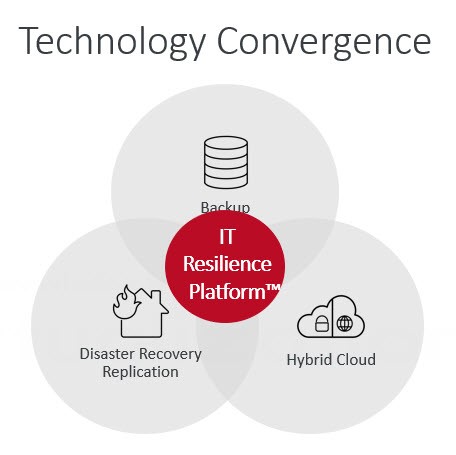IT Resiliency – Disaster Recovery for the Modern Era

Resilience is defined as the capacity to recover quickly from difficulties. Expanding this definition into the IT Ecosystem, IT resiliency is the ability of an IT organization to maintain service levels regardless of the difficulties faced. These difficulties come from a variety of angles, including security threats, network, and infrastructure outages, and just basic human error. The complexities only increase as organizations embrace multi-cloud strategies. [bctt tweet=”We have reached an inflection point where the focus on Disaster Recovery doesn’t properly prepare organizations for the day to day challenges that impact IT service availability.” via=”no”]
A focus on IT resilience encourages an organization to prepare for events that wouldn’t traditionally fall in the realm of Disaster Recovery. We are all used to talking about, and preparing for, a catastrophic situation that could impact our IT services. I’ve gone through countless exercises with a premise of a hurricane, tornado, earthquake or other natural disaster wreaking havoc on a data center and causing the entire IT Service Catalog to be unavailable. The disaster recovery plan kicks in and the entire IT organization executes a recovery operation to the DR site. In this situation, a well-designed DR plan and strategy are critical to bringing key applications back online in a timeframe that is acceptable to the business. While these natural disasters do occur and can significantly impact a business, there are other incidents that can have just as significant of an impact.
Take, for example, the recent SamSam ransomware attack on the city of Atlanta. This incident not only disrupted the day-to-day operations of the city but also cost Atlanta over 2.7 million dollars (and counting) to recover from. These types of events can cripple an organization just as effectively as a natural disaster and are not adequately defined in DR planning. This is where a focus on IT resiliency changes the game.
[bctt tweet=”Planning for impact to service level agreements outside of the traditional “disaster” scenario will dramatically improve an organizations ability to recover from unforeseen and unknown events.” via=”no”]
Fortunately, technology companies are mapping out platform improvements that address these challenges in a way that will change the way we think about these events in the future.
One company that continues to innovate is Zerto. Zerto 7, which will be coming out next year, offers several new advances to address IT resiliency concerns. The new “elastic journal” allows an organization to recover from a wide variety of scenarios that impact service availability. In addition to Zerto’s traditional capabilities to “rewind” an application protection group to just moments before that ransomware hit your critical document management system, Zerto 7 will also offer the ability to extend that protection out to years utilizing cost-effective secondary storage targets. These features will be combined in an intuitive interface that offers full recovery capabilities down to the file level using the same continuous data protection that Zerto is known for. Zerto is even changing their branding to use “The IT Resilience Platform” moving forward, further illustrating this key shift in the market.

As the technology landscape continues to evolve, PaaS and containers will play a more significant role in an organization’s IT Service Catalog. IT resiliency planning will need to expand to include these services and more. Technology platforms will continue to adapt to this changing landscape and provide solutions for recovery regardless of the type of service. However, IT organizations must also adapt.
[bctt tweet=”It is more critical than ever that organizations begin adopting IT resiliency planning as part of the business continuity and disaster recovery discussion.” via=”no”]
Prepare your organization before you get hit with a ransomware attack that cripples your business or an unexpected outage in a public cloud provider. A recovery time measured in hours, not days can be readily accomplished with the right platform and partner.



